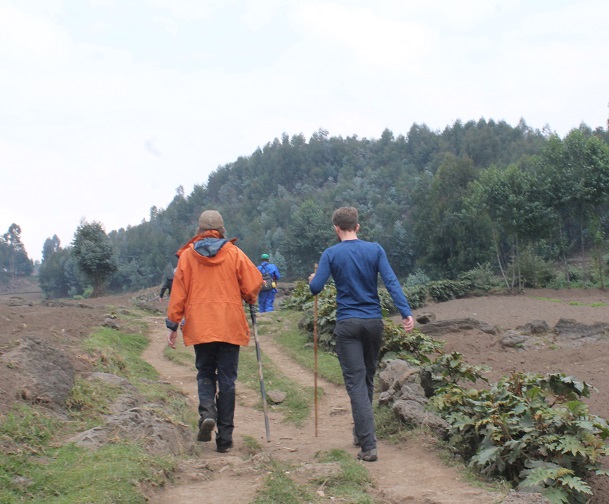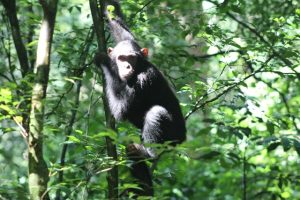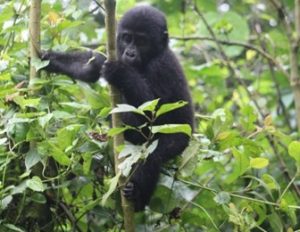 What do I need to pack for my gorilla trekking trip? This is one of the most asked question by tourists booking gorilla trekking tours in Rwanda and gorilla trekking tours in Uganda. Below I shall discuss the items to include in your gorilla tour packing list. I categorize them into 3; the most essential items that you need to pack first, to those you may need but are not essential and can leave behind if you do not have enough space left in the bag or can’t spend any more, and the least essential but worth thinking about…
What do I need to pack for my gorilla trekking trip? This is one of the most asked question by tourists booking gorilla trekking tours in Rwanda and gorilla trekking tours in Uganda. Below I shall discuss the items to include in your gorilla tour packing list. I categorize them into 3; the most essential items that you need to pack first, to those you may need but are not essential and can leave behind if you do not have enough space left in the bag or can’t spend any more, and the least essential but worth thinking about…
Most essential/must have essentials
- Hiking shoes
Because you will be trekking on uneven rugged terrain where there is no defined trail (a trail will be created by a machete person) you need shoes with good traction that will give you stability on ground to prevent you from frequent slips, and shoes that will protect you from straining your feet and ankles. Mid-cut to high-cut hiking shoes would be the ideal because they provide more stability and protect the ankles.
Yes, your old pair of sneakers could do but if you will be trekking during the wet season (March – May, & Oct – Nov) you will be in for quite a challenge. Read more about best time for the gorilla trekking to learn about the seasons.
- Long pants
Long outdoor/hiking pants will give you much needed comfort and freedom of movement in the thick of the jungles and across highlands, something your jeans may deny you. The ‘long’ protect your legs from prickly plants such as the stinging nettles which can be a menace during the trek. A slight rub off on a stinging nettle gives a burning irritation on the skin. The hiking pants which are made of light material are fast drying and some are water proof which is an important aspect as the rainforests can experience rain at any time.
- Long-Sleeve shirt
Long sleeved shirt (preferably the outdoor/hiking type) also offer the advantages of the hiking pants mentioned above, especially protecting your arms from the stinging nettles and other prickly plants.
- Rain jacket/poncho
A rain jacket or poncho is simply a must have irrespective of which season you are trekking! As much as there is a known wet season which receives frequent rains (March – May & Oct – Dec), and the other months being the dry season with little rains expected, the gorilla homes are mountain rainforests were the weather is unpredictable and rains can fall when you least expect. If you are trekking in the wet season such as during the months of April & May a rain poncho is highly recommended.
- Sunscreen
The gorilla highlands are located near the equator and sun is overhead during your trek. Sunscreen will protect you from sunburn.
- Insect repellent
The jungles have lots tiny insects flying around especially in the morning and can be quite irritating whizzing around your ears and eyes and some giving you a bite. Mosquitoes are the biggest menace. Applying an insect repellent will wad them off and keep your trek more focused and comfortable.
- Day pack
A daypack is very essential to keep your items such as water bottle, camera, toiletries, and snack in one place in a daypack strapped on your back so that your hands are free as you maneuver through jungle. The daypack also keeps your items in place to avoid losing them in the jungle where they will be had to find.
- Mask (post covid19 pandemic)
A mask in this covid19 era is an essential item. As humans we share 98% DNA with the gorillas and can therefore pass on the covid19 to them.
You need these but are not really essentials
- Garden gloves
Garden gloves keep you warm and also protect your hands from pricky plants as you move through the jungle. They also give you good grip on the hiking stick and protect your delicate hands from blisters due to friction.
- Cap/hat
This is almost a must have essential. The jungle has particles such as falling from the trees and you don’t want to keep some in your hair. The cap/hat also gives you shade over your face when hiking on a hot sunny day.
- Gaiters
Gaiters will protect your pants from mud and also keep insects from crawling under your pants. If a single red ant succeeds in getting access to your bare underneath you may dance strokes you never though were capable of 😊
An alternative to gaiters is simply tucking your pants into stockings.
- Hiking/trekking poles or sticks
You can bring own trekking poles that you have tested on hikes to be giving you the best stability and comfort. Otherwise, free trekking sticks are provided that are locally made from wood, they are technically small tree branches or stems.
- Quality camera or just a good smartphone
The gorilla trek is a once in a lifetime experience and you would want to keep a memorable of this unique encounter. The gorillas can also deliver a special moment at time and you want to be able to capture it. However some people want enjoy these wonderful creatures and want to take in as much as possible this incredible encounter without being bothered by photos
- Sunglasses
The sunglasses will definitely protect you from intense light especially if you are coming from a place that doesn’t receive a lot of it.
Least essentials, you don’t really need these but…
- Camelback Hydration pack
You can have this if you don’t want to be inconvenienced by handling a water bottle
- GPS
You may want to know how much you have trekked and where you have trekked
- Binoculars
If want to observe other forest dwellers that may be seen far from you a distance such as monkeys, birds, etc…
- Flare 😊
If you you just wrong turn and you got a phobia of being lost you can carry a flare to give you a bit of comfort, otherwise chance of getting lost are next to none. Unless if you are planning to stray away from the group unnoticed

